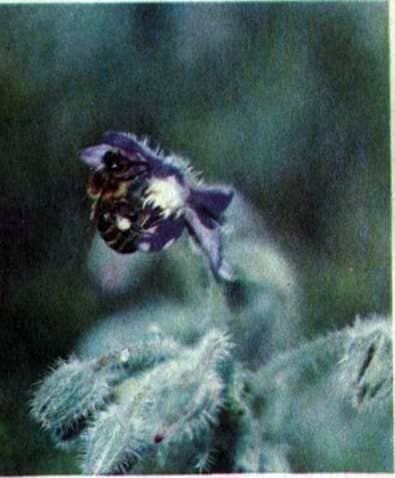
The beekeeper must know the melliferous flora of his locality and enrich it. Only then can he count on high honey gathering. He should remember that bees collect the maximum amount of nectar and pollen from those plants that are from the apiary within a radius of 2 km. With the removal of plants, the amount of nectar and pollen is reduced, honey is reduced, although bees can fly for 3-4 km.
First, familiarize yourself with the main medonos, growing in the streets, in the park, in the forest, in the meadow, in the field, determine approximately their number (trees, bushes) or area (grassy plants). It is better to do this in the spring and summer, during their flowering. To perform this task systematic excursions in small groups are mandatory.
Set the swing of the flowering of each species of honey plants, the duration of flowering and ending it. Such phenological observations will help you compile a calendar for the flowering of the meadows. In the central part of Russia, for example, the iva-bredine blooms on April 26 and blossoms 10-12 days, the apple tree on May 21 and blossoms for about two weeks, the linden on July 4 and ends on the 14-16th day.
Pay attention to how, intensely or weakly, the bees work on the colors of these plants, because once a flower is visited, how long the nectar collector or pollen on the flower lingers. To do this, you will need a stopwatch.
Simultaneously, make the herbarium of the honey plants, distributing them to forest, meadow, field; describe them in detail (the family to which the plant belongs, the structure of the flower, the color of the corolla, the type of inflorescence, the location of the nectaries, the flowering time).
Trace individual bee collectors working on different melliferous plants: white clover, cornflower, sweet clover, etc. These observations will help establish the so-called flora-specialization of insects, in which each bee searches and visits flowers of a strictly defined plant species.
Collect the seeds of honey plants – white clover, white and yellow sweet clover, phacelia, bruise, cucumber grass, sow them on the school plot, uncomfortable lands, in the village. It’s good to create a collection of seeds.
In spring and autumn plant honey trees and shrubs – linden, vet, yellow and white acacia, honeysuckle, acacia, hawthorn. Saplings can be grown on the plot of the school plot.
Where to winter bees.
In winter, you can sometimes see: there are beehives near a house in the garden or on the estate of a large public apiary, snow caps on them, drifts around and frosts are forty-degree. And the beehives are not covered, except the snow, and there are no traces to them. Are the inhabitants of the bee colony frozen?
It turns out, no. Honeybees during their centuries-old history have well adapted to low temperatures and can tolerate even fifty-degree frosts. Although each bee freezes individually at plus temperatures, in mass, bees are able to create their own environment, their own climate, regardless of the ambient temperature. Ironically, it turns out that it’s easier to raise the temperature in your nest than to lower it.
Платформа для прицепа к легковому автомобилю. Расширить пчелы.
Young Beekeeper